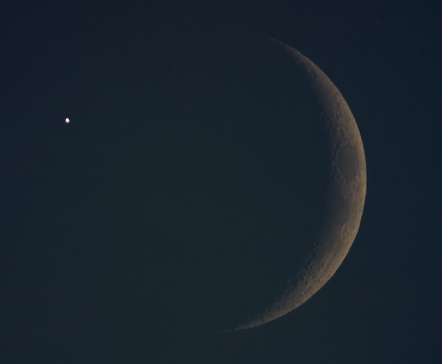
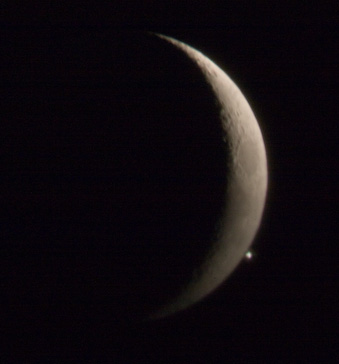
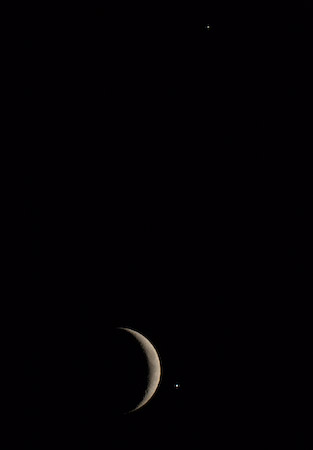
partially obscured by trees: 17.18hrs.
and Jupiter: 17.35hrs.
Two recent images of geostationary satellites appear on this page.
Remarkably, clear skies allowed a good view of this event during the late afternoon and early evening of 2008 December 1. Here are two images acquired with ny Canon 40D attached to a Borg 101ED, and a wider shot taken with the 40D and TeleVue-85.
 |
 |
 |
| Just before disappearance at 15.45hrs. | From my observatory the reappearance
was partially obscured by trees: 17.18hrs. |
From the playing field, the Moon,
Venus and Jupiter: 17.35hrs. |
Here are some images of the ISS taken with the Canon 40D and Celestron C11. The telescope tracked the ISS under computer control using Brent Boshart's LXSat program. Fine adjustment to the tracking rate was aided by a video camera and 300mm lens acting as a finder 'scope. The exposures are 1/200th second at ISO 200, EFR f/10.
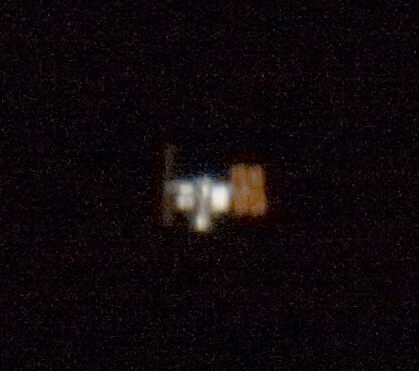 |
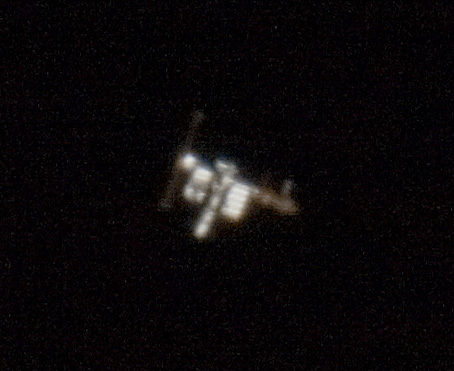 |
| 2008 April 4th, 20.04.27 hrs. | 2008 April 4th, 20.04.54
hrs. The ATV, Jules Verne, is the lower-most module. |
A truly unique comet! I have lots of images to process, but here is a composite of three images taken with the TeleVue-85 and SXV-H9 CCD camera to show the expansion of the coma over a period of 15 days. The image taken on the 29 November 2007 is at the same scale and shows just how large the comet has grown over another two week period.
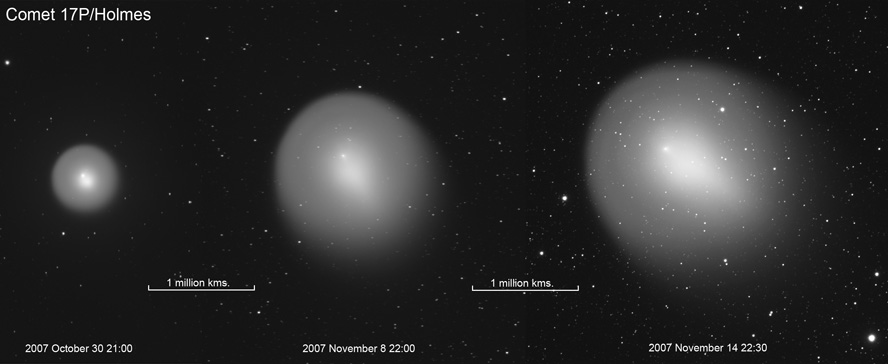 |
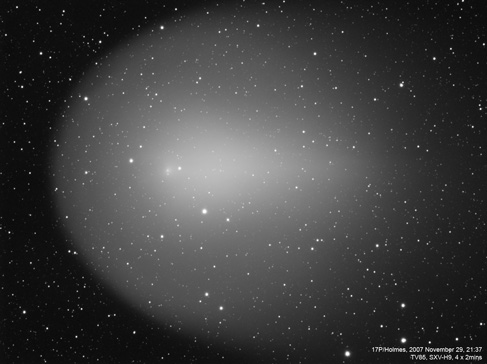 |
 |
Clear skies over Sussex enabled perfect views of the Total Lunar Eclipse on 2007 March 3. Here is an image captured during totality with the SXV-H9 CCD camera attached to the TeleVue 85 refractor. Note the star 56 Leonis to the south-west of the Moon.
While in Spain for the annular eclipse of 2005 October 3, I took the opportunity to do some deep-sky imaging using a Starlight Xpress SXV-H9 CCD camera attached to a TeleVue 85 refractor.
On 2005 March 4, ESA's Rosetta spacecraft made its first swing-by of Earth on its way to its 2014 rendezvous with Comet 67P/Churyumov-Gerasimenko. Observation was difficult due to cloud, but the following sequence of images was obtained.
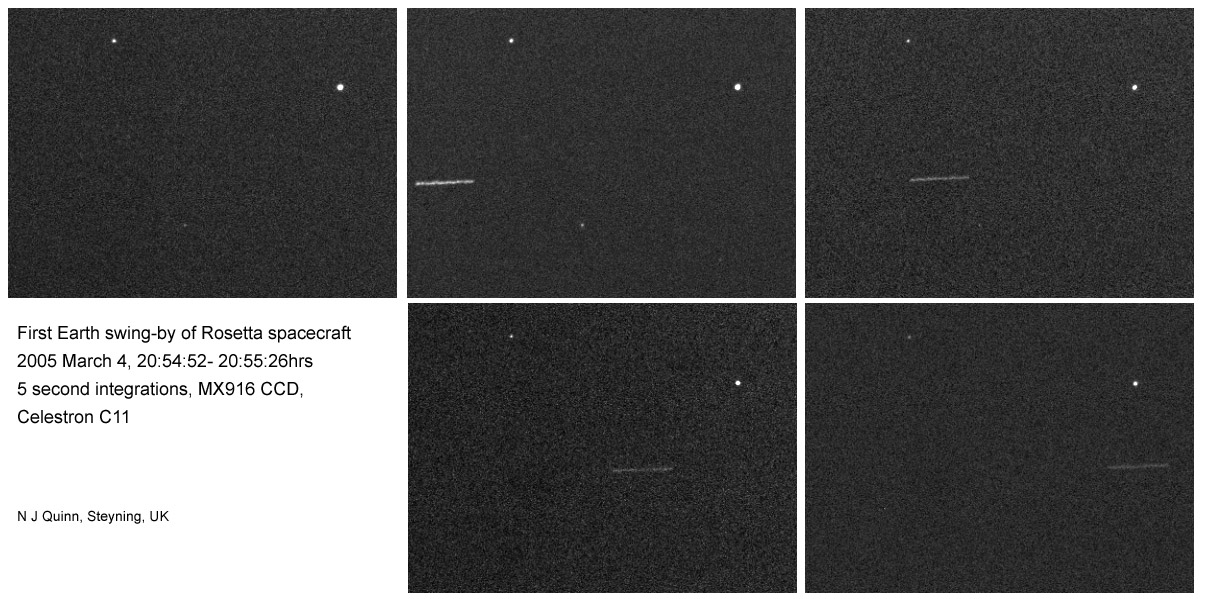
This animation was made from images captured on 2005 March 3
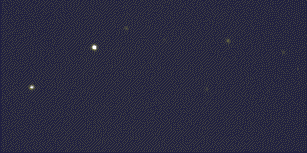
Images of M42 (LRGB) and the Horsehead Nebula taken with a Starlight Xpress MX916 CCD camera, through a TeleVue 85 refractor.
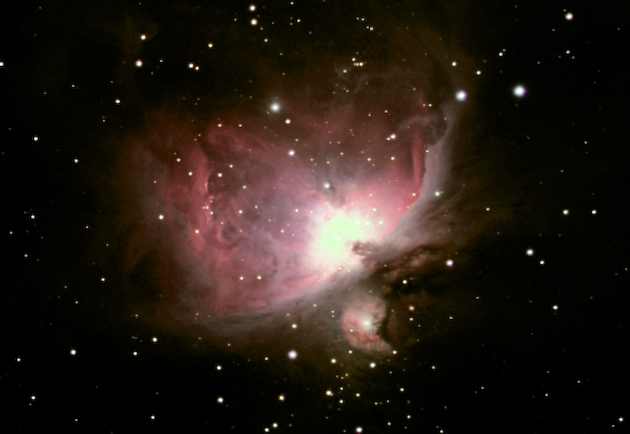 |
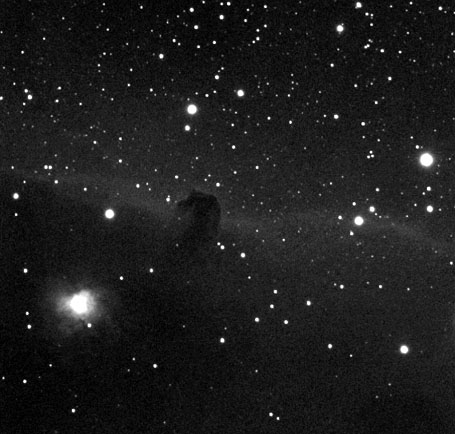 |
A stack of 60 second integrations taken with a Starlight Xpress MX916 CCD camera, through a TeleVue 85 refractor on 2005 January 13 at 21.25hrs.
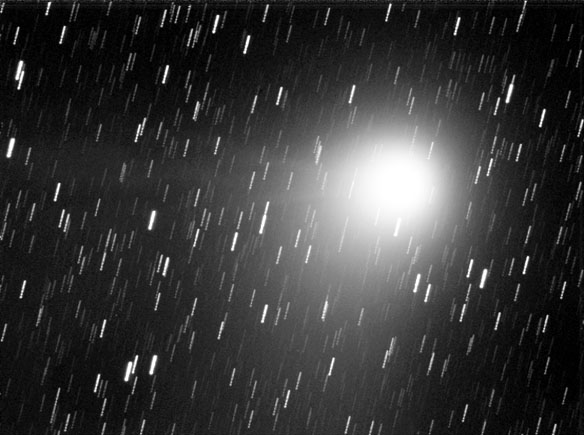
A stack of 60 second integrations taken with a Starlight Xpress MX916 CCD camera, through a TeleVue 85 refractor on 2005 January 2 at 22.00hrs.
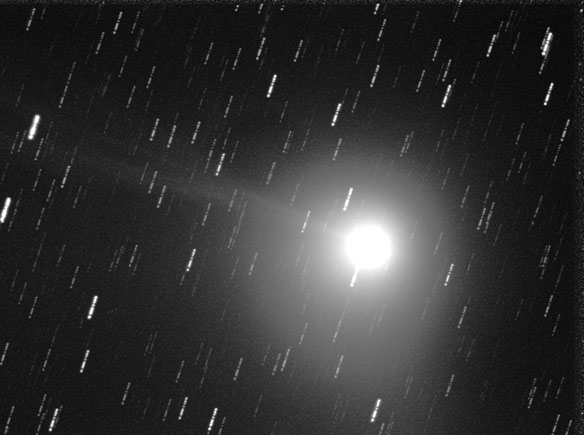
The images below were obtained with the MX916 attached to a Celestron C11, on 2005 January 5 and 2005 January 13. The images have been processed with a 'Larson-Sekanina' filter designed to enhance jets and hoods within a comet's inner coma. The ion tail points away from the coma towards the 10 o'clock position; the jets at 2 and 4 o'clock are on the sunward side of the comet. Images by Navarro and Rondi show similar features.
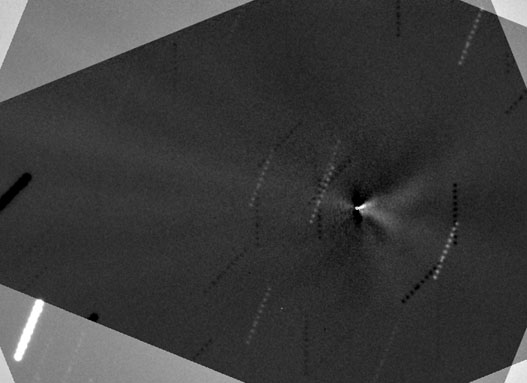 |
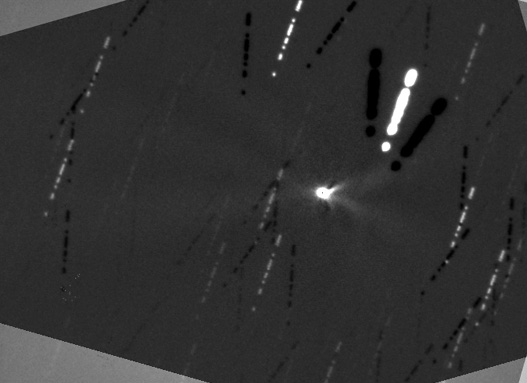 |
| 2005 January 5, 22.30hrs. | 2005 January 13, 20.10hrs. |
Link to 2004 images (2004 RTZ164, 3637 O'Meara, 78P Gehrels, C/2001 Q4 NEAT, M27, Solar)
Link to 2003 images (P/Encke, Solar)
Nick Quinn, 2009 March 1